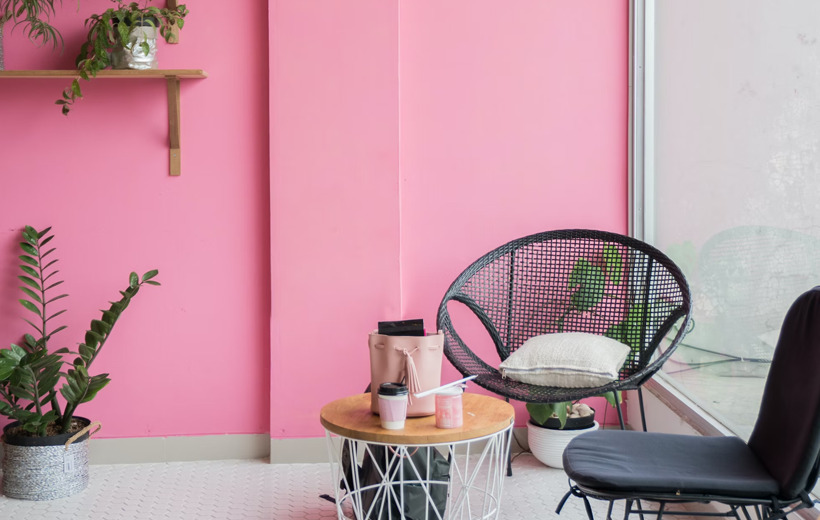Color blocking is a creative technique in interior design that involves using distinct blocks of color to create visual interest, drama, and style within a space. This technique can transform a dull room into a vibrant and dynamic environment. By strategically combining contrasting or complementary colors, you can evoke various moods and establish a unique ambiance that reflects your personality and taste. Here’s how you can use color blocking to add drama and style to your rooms.
- Choose a Color Palette: Before you begin color blocking, select a color palette that resonates with the aesthetic you want to achieve. Consider the room’s purpose and the emotions you’d like it to evoke. Warm colors like reds, oranges, and yellows can create a cozy and inviting atmosphere, while cool colors like blues and greens can promote relaxation and tranquility. Neutrals such as whites, grays, and blacks can serve as a backdrop for more vibrant color blocks.
- Identify Focal Points: Determine the focal points in the room where you’d like to apply color blocking. These could be walls behind furniture pieces, architectural features like alcoves or niches, or even the ceiling. By highlighting these areas with color, you draw attention to them and create a sense of drama.
- Choose Contrasting Colors: Color blocking is all about contrast. Select colors that are opposite each other on the color wheel for a striking effect. For instance, pair a deep blue with a bright orange or a rich purple with a vivid yellow. The contrast between these colors creates a visually dynamic and energetic vibe.
- Create Geometric Shapes: Incorporate geometric shapes to implement color blocking effectively. Use painter’s tape or stencils to achieve clean lines and crisp edges. Triangles, rectangles, and squares are popular choices for creating distinct color blocks on walls. For a more subtle approach, consider using color-blocked furniture, rugs, or accessories.
- Consider Proportions: Pay attention to the proportions of each color block. The size of the blocks will impact the overall visual balance of the room. Larger blocks can make a bold statement, while smaller blocks offer a more delicate touch. Experiment with different sizes to find the right balance for your space.
- Blend with Neutrals: To prevent overwhelming the space, balance the bold color blocks with neutral elements. Incorporate neutral furniture, flooring, and decor to provide a visual break and create harmony. This will also ensure that the color blocks remain the focal points without causing visual clutter.
- Experiment with Gradation: Incorporate a sense of movement and depth by experimenting with gradation within the color blocks. Start with a single color and gradually transition to its lighter or darker shades. This technique can add sophistication and dimension to the design.
- Consider Lighting: The way light interacts with your color blocks can significantly influence their impact. Natural light and artificial lighting can alter the perceived color, so consider these factors when selecting your colors. Test the color blocks under different lighting conditions to ensure the desired effect is achieved.
- Accessorize Thoughtfully: Complement your color-blocked design with carefully chosen accessories. Pick decor items, such as cushions, artwork, vases, or curtains, that echo the colors used in the blocks. This creates a cohesive and polished look throughout the room.
Color blocking is a versatile technique that allows you to infuse drama and style into your rooms. By selecting contrasting colors, creating geometric shapes, and maintaining balance with neutrals, you can achieve a visually stunning and unique space that reflects your personal aesthetic. Remember to experiment, take risks, and have fun as you transform your living areas into dynamic and vibrant havens.
When it comes to house painting in Brentwood or beyond, our highly skilled team has the knowledge and expertise to help you choose the right colors for your home.



